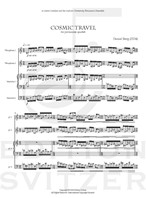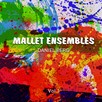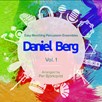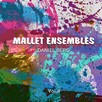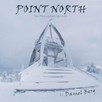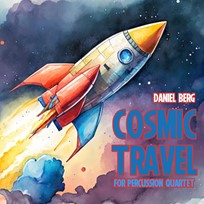
Cosmic Travel
Composer: Daniel Berg
Instrument: Percussion Quartet
Level: Intermediate/Advanced
Published: 2024
Price: €60.00
Item details
-
Description +
-
That’s one small step for (a) man, one giant leap for mankind. On July 21, 1969, Neil Armstrong took the first step on the moon, and I still have a hard time understanding how it is even possible to travel in space. What is perhaps even more difficult to understand is that our solar system is only one of 200-400 solar systems in the Milky Way galaxy - what is in the next solar system and what is in the next galaxy?
Feel the rush of happiness and the tickling curiosity as we travel through the cosmos and discover the unknown - join my cosmic travel!
Daniel Berg
-
-
Instrumentation +
-
Percussion Quartet
2 Marimbas
2 Vibraphones
-
-
About the composer +
-
Daniel Berg is a Swedish composer, musician, and professor in classical percussion at the Royal College of Music in Stockholm and at the Academy of music and drama in Gothenburg.
In his passion to promote the marimba as a solo- and chamber music instrument, Daniel has worked intimately with a number of composers who have written original music for the instrument. This includes more than 300 world premier for solo and chamber works. Daniel Berg is a marimba artist of Bergerault and Elite Mallets.
As a composer Daniel has written a lot for solo marimba like Mistral (for Michael Burritt), Phoenix (for Robert van Sice) and Yán Jiâng (for the Taiwan World Percussion Competition). His music for percussion ensemble have been appreciated and often performed like Kroumata (for sextet) and Arctic Nights (for quintet) - all published by Edition Svitzer.
-
-
Reviews +
-
Review (Percussive Notes, February 2025)
This is one of my new favorite percussion quartets; I have thoroughly enjoyed studying the score and listening to the recording. It is 5½ minutes of energy; Daniel Berg draws the listener in right from the beginning to the end. Its harmony and rhythmic movement throughout help accomplish this.
Through much of the piece, Cosmic Travel is built on all three octatonic scales as it moves fluidly between them. While the octatonic tonality is used throughout the piece, the composer avoids depending on it. It could have been easy to limit the piece to the octatonic scale, but instead, Berg chooses to write what is right. For example, in measures 33–44, he continues using similar ideas from the opening octatonic section, but switches to a diatonic scale and adds a clear melody, which poignantly marks a mood change. Energy is brought rhythmically from the use of dotted-eighth notes, phrases that cross the barline, and time-signature changes.
The vibraphonists each need a bow to play the melody of the middle section as crotales are introduced. Thanks to these textures, sparser in the marimba and less articulate in the vibraphone, it may feel like things are slowing down through this section, but the tempo does not let up. This section builds by thickening the texture until it lands on a thrilling recapitulation.
Four-mallet technique is required for all performers, and a notable amount is needed from each individual. This piece could have been harder than it is, but Berg serves the music well by writing what should be written, rather than what could have. I highly recommend this piece as a showstopper on a collegiate or professional concert program.
—Stephen Busath
-
-
Credits +
-
Artwork (photo): Pelle Kronestedt
Photo (Berg in Space Rocket): Per Buhre
Cover: Nicola Lee
Printed in Copenhagen, Denmark
Copyright © Edition SVITZER
www.editionsvitzer.com
With support from Koda’s Cultural Funds
-
